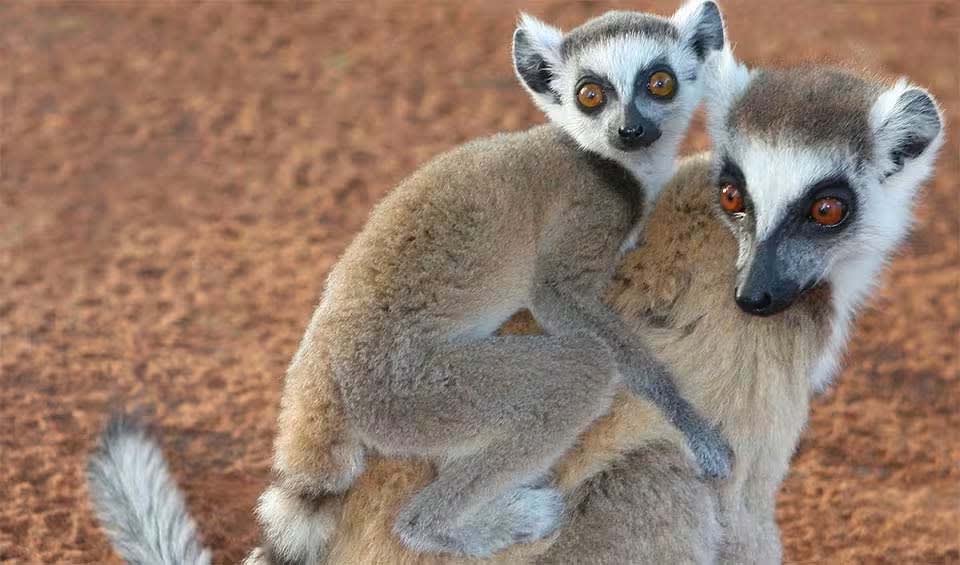Lemur – Ring-tailed Lemur
Highly recognizable lemur due to its black and white ringed tail
One of Madagascar’s most iconic and recognizable primates. Ring-tailed lemurs inhabit the southern regions of Madagascar, thriving in a variety of forest types, including spiny forests, gallery forests, and dry scrub areas. This adaptability to different environments underscores their resilience and resourcefulness. Despite their adaptability, ring-tailed lemurs are profoundly affected by the island’s environmental changes, particularly habitat destruction resulting from slash-and-burn agriculture, illegal logging, and the expansion of human settlements.
Notably, terrestrial among lemurs, ring-tailed lemurs spend a considerable amount of time on the ground, a unique behavior that distinguishes them from their predominantly arboreal cousins. However, they also navigate the mid to upper canopy of the forests, where they forage for food, rest, and socialize. They are highly social animals, living in groups known as troops, which can comprise up to 30 individuals, led by dominant females who play a crucial role in group decision-making and resource allocation.
The diet of ring-tailed lemurs is omnivorous, consisting of fruits, leaves, flowers, bark, and occasionally invertebrates, providing a vital role in seed dispersal and thus, the health of their ecosystems. They have a breeding season once a year, with females typically giving birth to a single offspring, although twins can occur. The high reproductive rate in captivity contrasts starkly with their endangered status in the wild, underscoring the impact of human activities on their natural populations.
As of 2018, the ring-tailed lemur is classified as Endangered by the International Union for Conservation of Nature (IUCN), with ongoing declines in population numbers due to habitat destruction, hunting for bushmeat, and capture for the exotic pet trade. Despite being one of the most populous lemurs in zoos worldwide, with more than 2,000 individuals in captivity, this does not mitigate the urgent need for conservation efforts in their natural habitat.
Species in this genus
Ring-tailed lemur
Highly recognizable lemur due to its black and white ringed tail

